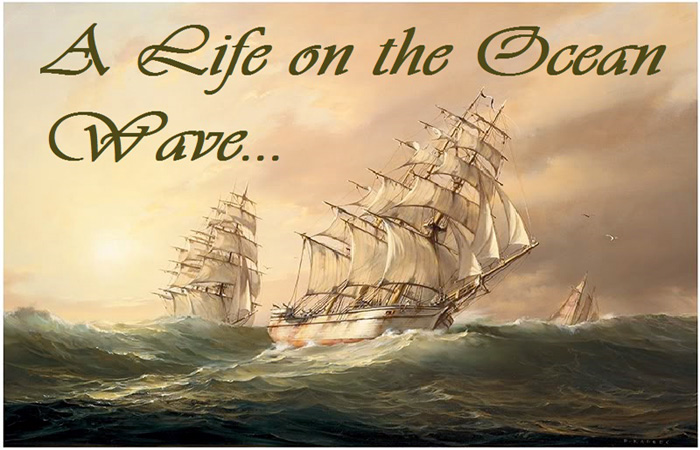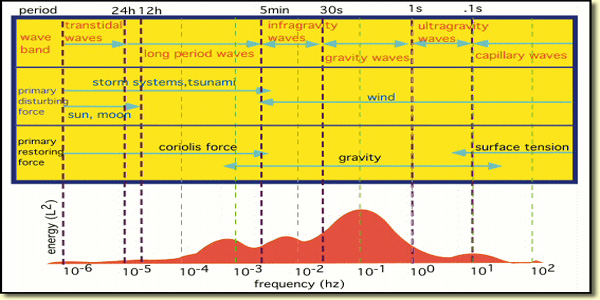
A
"fair wind and a
following sea" is astrologically like a transiting stellium that
you can ride on...
...the sky
above, and the sea below...
By
John Townley, November 2013
Considering that
astrology (and everything else
environmental) is about nothing but a surrounding set of
natural phenomena,
it’s surprising how few astrologers look at it that way.
Way back in the 1970s I recall introducing the image that it’s
less
like finding the finger of fate
and more like predicting the weather – you can’t
change it, and the best
forecasters don’t always get it right, but you certainly can
take precautions,
whether it be an umbrella or sunscreen. That metaphor has become quite
popular
since, but it’s usually dashed off as a light explanatory
comment, when
in fact it goes to
the very heart of the matter.
We see that our
immediate environment is tuned to a series
of rhythms in air and water, transformed by the Sun’s heat
and interacting with
earth beneath our feet, driven by the strong, insistent beat of Sun and
Moon,
and the lesser pulses of the planets. And we, like ships on the sea,
navigate
the changing winds and waves which can vary from smooth ocean swells to
angry,
chaotic tumult. A strong, prevailing trade wind and its accompanying
easy swell
can take us far, in a long easy reach. Or, a tempest nearby can produce
crazy,
peaked seas that can capsize our vessel, even without an actual storm
on top of
us. And, a sailor with a good eye – and these days an accurate
satellite weather
report – will know
exactly what to expect and can take steps to make the most of it.

Depending upon what?
Upon exactly where they’re coming from,
and at what angle, just like ocean waves. If your ship is clipping
along in an
easy, following sea in the trade winds, it’s because miles of
winds and
multiple storms are all lined up behind you, driving a single, giant,
combined
pulse – kind of like a stellium of planets in a chart, all
the energy coming
from a single spot, generating a unidirectional wave. It’s a
great environment,
but favors only one direction. If you’re skimming along on
top of it, it’s a
heady, free ride, but if you’re plunging head-on into it,
it’s a bear – and
coming from the side or the quarter, it’s a roll that sailors
enjoy but may
make landlubbers seasick. So, in a transiting sky, think of a stellium
that way
– and consider where it’s hitting your chart,
whether straight on, sideways, or
from the rear.
Two
opposing waves either double up (l), or cancel out
(r) -- think transiting
opposition...
But as at sea, there’s usually more than one
wave generator
sending action your way, and sometimes it can get really complicated.
As, for
instance, when you’re directly between two storm systems.
There, you have waves
coming at you from both directions, and waves like that either cancel
each
other out or combine into much bigger, vertical waves that just bump
you up and
down, without any useful forward motion – you have to keep
headway and push it,
or you’ll get rolled on your side. Think of that,
astrologically, as a
transiting opposition: things get pushed alternately this way or that
way, or
just cancel out into nothing – you have to push back to cope.
Waves from four
separate directions make crazy peaks -- think transiting grand cross.
The worst kind of wave pattern you can get is when you’re
right in the middle of multiple, right-angle wave generators, coming
from all
four directions. That produces a horrendously choppy set of chaotic
peaks that
are constantly upsetting your stability and can easily swamp your
vessel, what
you see in a typical maritime painting of a bad storm. Astrologically,
that’s a
grand cross, and no matter which way you turn, you’re getting
an argument or
resistance from one quarter or another.
Interestingly, when you get wave drivers coming from 60 or
120 degrees apart, fore or aft, it makes for a rather negotiable,
rolling sea
that’s equally easy to traverse to and from any direction,
which is what you
get when the sky is full of trines and sextiles. You still have to make
the
effort of setting and keeping your course, but the sea
doesn’t go out of its
way to interfere with you. But, of course, neither life nor the sea are
usually
that simple, and most of the time there are all sorts of variations
introduced
by the input from multiple patterns along with the rapid daily change
of the tides (at sea)
and the
Moon (astrologically).
To make use of all this, the hapless mariner of old, before
modern weather forecasting, really had to be expert at sensing the
immediate
situation and its implications, not knowing what storms were underway
afar. But
the astrologer knows where every planet is and will be well ahead of
time, and
so should be able to do much better. Of course, most don’t,
as although the
data is there, few have a working physical
theory to follow, even reduced
to just the simple but highly-correspondent
metaphor here on these
pages, and so astrology is generally not nearly as
useful as it ought to be.
So, in the end, is an ocean voyage really an ideal metaphor
for life’s journey? You bet it is, and it’s been a
favorite simile in varying
guises from classical authors, Renaissance
astrology,
and right up through recent evangelical hymnody.
And that’s because
whatever scale you choose, waves and waveforms make up the structure of
all
environments, at every size, with a relatively comparable story at
every level.
So when you see the tough stuff coming up next month in your ephemeris,
all you
have to do is thoughtfully and gently place yourself in just the right
part of the picture where you can ride the waves and not fight them,
and sail
on…
For fun: for a take from
Donald and Goofy on the venerable "A Life on the Ocean Wave", click
here...!
Not
a
newsletter subscriber already? Subscribe
Free
Here!
And
every day, keep in touch with our Astrology In The News section...please
take a look! --
Breaking news from
around the globe, plus articles, reviews, it's all happening there,
changes daily..
|
|
|

